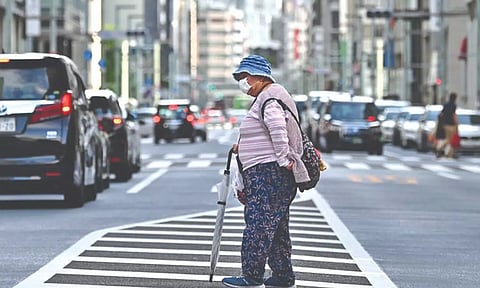Labour crisis worsens: Japan bets big on tech, immigration
TOKYO: The first sectors to feel the pinch of worker shortages were nursing and elderly care. The problem soon spread to construction and delivery businesses, followed by taxi firms, forestry companies and train operators. Now, Japan’s acute shortage of labour has spread to the government sector, with the Education Ministry in late January asking local authorities to estimate how many teachers they will be short of when the new academic year starts in April.
Early indications are not positive, with a survey conducted last year suggesting that 29 of the nation’s 68 prefectures were already feeling the effects of teacher shortages.
The ministry launched a 500-million-yen ($3.3-million) project last year to attract more university graduates to the teaching profession, but analysts say local governments, like the private sector, will struggle to fill vacancies when young people can shop around for better paying positions in the most popular cities.
And given that Japan’s population is both aging and contracting, with fewer children being born and elderly people living longer thanks to modern medicine, the longer-term outlook would appear to be bleak.
Analysts say that there is little that can be done to stop the gradual decline in the number of Japanese, but they are pinning their faith on a sector in which the nation excels: technology. “The medical and nursing care sectors have been most seriously affected by the shortages because demand is high as the population continues to age,” said Hiroshi Yoshida, a professor in the Research Center for Aged Economy and Society at Tohoku University.
“After that, shortages are impacting the transport sector — truck and taxi drivers, public buses and trains — because the supply of young labour is very limited,” he told DW.
“Wages are also not so high, while the trucking sector is also going to be affected by new laws that come into effect in 2024 and limit the amount of hours that drivers can work.” Referred to as the “2024 problem,” a study by NK Logistics Research Institute and Consulting Inc estimates that driver shortages will mean that total transportation capacity will plummet by 34% by 2030, meaning that some 940 million tons of goods will not be delivered every year, The Asahi newspaper reported. It is a similar story elsewhere, with a report by the Transport Ministry in 2021 indicating that the number of taxi drivers across the country had shrunk 40% from a peak in 2009.
Martin Schulz, chief policy economist for Fujitsu’s Global Market Intelligence Unit, said successive governments have known about the looming labour crisis, but policies to encourage people to have more children and prop up the workforce have failed to have an impact.
“It has been a long-standing issue, of course, with governments pushing it down the line as other problems came up, most recently the coronavirus pandemic,” he said.
“For some time, the country was able to manage because more women were coming into the labour market and old people were encouraged to stay longer on lower wages, but there was no way to avoid the fact that the core labour market, of people aged between 20 and 65, was shrinking,” he said. That situation was not unpopular with companies, however, as they were able to pad out their workforces with low-paid part-timers or older members of staff on less generous one-year rolling contracts, Schulz noted.
However, there are too few additional women to take on, and the oldest employees are finally retiring. And as a result, companies are short of staff, and their employees are demanding higher wages because they know they’ll find other job if they leave their present company.
One solution that the Japanese government has attempted — albeit tentatively — has been to introduce easier immigration rules to enable foreign labourers to fill some of the gaps. In 2019, a system was introduced to allow limited numbers of skilled workers in sectors that were most acutely short of staff to enter for five years, while those classified as being “highly skilled” were given the chance to settle permanently in Japan.

